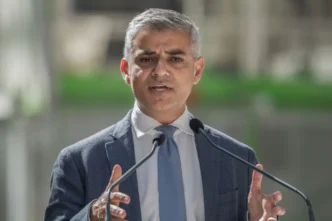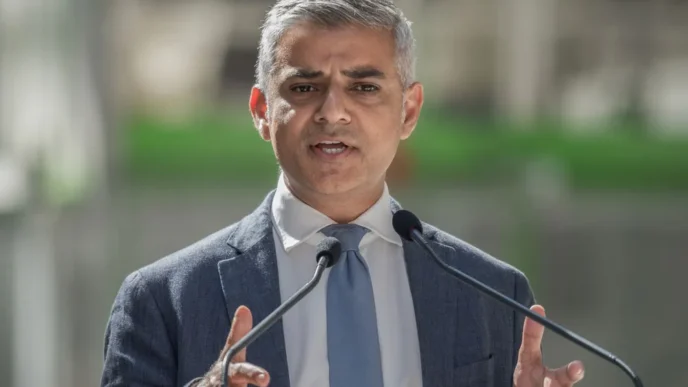In a dramatic turn in U.S.-China relations, President Donald Trump has announced a significant reduction in tariffs on Chinese imports, lowering the overall average rate to 47% following a high-stakes meeting with Chinese President Xi Jinping. The move, unveiled after what Trump described as “a very productive conversation” with Xi, marks the most substantial recalibration in trade policy between the world’s two largest economies since their trade war began in 2018.
The announcement signals a cautious thaw in economic relations between Washington and Beijing, as both leaders appear intent on stabilizing trade and restoring investor confidence amid global uncertainty.
A Breakthrough in a Long-Running Trade Battle
The decision follows months of quiet diplomatic engagement between the Trump campaign team, U.S. trade officials, and Chinese counterparts. The talks culminated in a private meeting between Trump and Xi during a bilateral summit in Singapore, where the two leaders reportedly spent hours discussing tariffs, technology, and industrial supply chains.
Trump, who had previously vowed to maintain “tough but fair” economic pressure on China, framed the agreement as a “victory for American manufacturers, farmers, and consumers alike.”
“We’re getting a much better deal for America,” Trump said during a press briefing at Mar-a-Lago. “China has agreed to major purchases, fairer market access, and stronger protection for our technology. In return, we’re making trade a little easier for them — but only because it benefits our people.”
Xi Jinping, in a statement released by China’s Ministry of Foreign Affairs, called the agreement a “new chapter of mutual respect and pragmatic cooperation.”
“The Chinese and American economies are deeply intertwined,” Xi stated. “We welcome this balanced approach and look forward to deepening cooperation in trade, innovation, and global development.”
What the Tariff Reduction Means
Under the new arrangement, average tariffs on Chinese goods entering the United States will drop from an estimated 60% to 47%, depending on product category.
Key sectors affected include:
- Consumer electronics: Tariffs on smartphones, computers, and electronic components will be reduced from 50% to 35%.
- Automobiles and parts: Duties lowered from 60% to 45%.
- Agricultural products: Soybeans, corn, and pork tariffs reduced from 55% to 40%.
- Industrial machinery: Lowered from 65% to 50%.
- Textiles and consumer goods: Reduced from 45% to 30%.
The new framework is designed to phase in over the next six months, contingent on China meeting U.S. conditions regarding market access, intellectual property protections, and enforcement of fair competition standards.
Trump also emphasized that the tariff reduction would be conditional and reversible if Beijing failed to uphold its commitments.
“This isn’t a free pass,” Trump declared. “If China cheats, tariffs go right back up — maybe higher than before.”
China’s Concessions: Opening Up and Buying Big
In exchange, Beijing has pledged a series of reciprocal concessions aimed at reducing the trade imbalance and rebuilding trust with American businesses. Among the most notable promises:
- Expanding U.S. agricultural and energy imports, including a multi-year commitment to purchase over $200 billion in goods.
- Strengthening intellectual property protections, particularly in technology and pharmaceuticals.
- Allowing greater market access for American financial and tech companies in China.
- Easing restrictions on foreign ownership in key industries such as automotive manufacturing and green energy.
The Chinese government also hinted at possible cooperation with the U.S. on AI governance, semiconductor supply stability, and carbon neutrality goals — areas that have been flashpoints in the past.
Market Reaction: Cautious Optimism
Global markets reacted swiftly to the news. Wall Street opened higher on optimism that the deal could cool years of escalating economic tension. The Dow Jones Industrial Average rose over 500 points, while tech-heavy NASDAQgained nearly 2% in early trading.
Asian markets, particularly in Hong Kong and Shanghai, also surged, with investors betting on renewed stability in global supply chains. The Chinese yuan strengthened slightly against the U.S. dollar, reflecting renewed confidence in China’s export outlook.
Economists say the deal could ease inflationary pressures in the U.S. by lowering import costs, but some caution that it may not fully restore the pre-trade-war environment.
“A 47% tariff is still historically high,” said Dr. Emily Harris, a trade economist at Columbia University. “But it’s a signal that both sides are tired of confrontation. This is less about free trade and more about controlled competition.”
A Political and Strategic Balancing Act
For Trump, the move marks a strategic shift as he positions himself for a second term in the White House. After years of defining himself as the president who “stood up to China,” Trump is now portraying himself as the leader capable of striking deals that others couldn’t.
Political analysts note that this could play well among both business leaders and working-class voters who have felt the sting of inflation and disrupted supply chains.
“Trump is recalibrating his China policy,” said Richard Fontaine, CEO of the Center for a New American Security. “He’s showing he can be both tough and transactional — punishing when necessary, but pragmatic when it benefits America.”
For Xi, the deal helps China secure economic breathing room amid slower growth and mounting domestic challenges. The reduced tariffs could boost Chinese exports and stabilize employment in key industrial sectors, while offering a diplomatic win that reinforces Xi’s global image as a capable negotiator.
Lingering Tensions Beneath the Surface
Despite the optimistic tone, key structural issues remain unresolved. Washington continues to express concern about China’s state subsidies, cybersecurity practices, and military expansion in the Indo-Pacific. Meanwhile, Beijing remains wary of U.S. restrictions on advanced technology exports, particularly semiconductors and AI hardware.
U.S. trade officials stressed that the tariff reduction does not mean a full normalization of relations. The Biden administration’s “China guardrails” remain in place — including export controls, investment screening, and sanctions related to human rights abuses in Xinjiang.
“The tariff cut is not a capitulation,” said U.S. Trade Representative Katherine Tai. “It’s a recalibration that reflects America’s interests in stability and fairness.”
The Global Ripple Effect
The Trump–Xi accord could reshape global trade dynamics far beyond Washington and Beijing. European and Asian exporters — particularly those in South Korea, Japan, and Germany — may benefit from reduced volatility in global manufacturing chains.
However, it could also spark new competition as the U.S. and China reassert dominance in key sectors such as clean energy, AI, and advanced electronics.
Emerging economies may find themselves navigating a more predictable but still divided global trade order, with Washington and Beijing both courting allies through investment and trade incentives.
Conclusion: Pragmatism Over Confrontation
The 47% tariff decision represents a symbolic and strategic pivot for both nations — one that replaces open hostility with conditional cooperation. For Trump, it’s a showcase of dealmaking prowess; for Xi, it’s a moment of stability amid domestic and global pressures.
Whether this new détente endures will depend on how faithfully both sides adhere to their promises — and how global markets respond in the months ahead.
What’s clear is that, after years of trade conflict, the U.S. and China are once again talking not about war, but about business — and that alone may be the biggest breakthrough of all.















